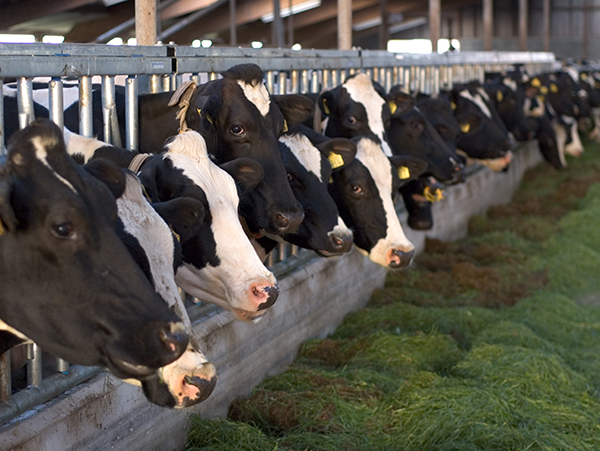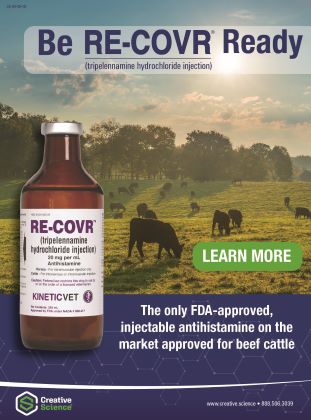Quality Forage Management

By Jessica Graham
Producing high-quality forage is an essential part of running a successful livestock operation. Sure, anyone can grow hay or let animals graze on pasture, but hitting the mark with forage that truly meets your herd’s nutritional needs, takes some know-how, a good plan, and plenty of effort. Let’s dig into what it takes to produce top-notch forage, from choosing the right plant species to fine-tuning your grazing system and keeping tabs on pasture quality.
Evaluate Your Herd
First, let’s talk about understanding the forage needs of your herd. Not all cattle eat the same amount or type of forage. A cow that’s just calved, for instance, will consume about 40% more forage than a young heifer. Bulls will eat twice as much as a heifer. So, it’s essential to match the mix of grasses, legumes, and forbs to what your herd actually needs. After all, feed costs are the single biggest expense in most cattle operations. Grazing can help lower those costs significantly, but it’s only efficient if you manage it right. A well-thought-out, pasture-based system lets you make the most of your land while keeping production levels high.
Species Selection and Legumes
When it comes to choosing the right forage species, the goal is to have production throughout the year. You will see more benefit by approaching your pasture management from a multi-species plan. That means planning for a mix of cool-season and warm-season grasses, along with maybe some winter annuals to bridge the gaps and extend your growing season. Cool-season grasses, like Kentucky bluegrass, orchardgrass, and ryegrass, thrive in early spring and fall when temperatures are milder. They’re your workhorses when warm-season varieties slow down. For summer, you’ll want warm-season options like Bermuda grass, switchgrass, or big bluestem. They’ll handle the heat and keep your herd fed. Don’t overlook winter annuals like rye, triticale, or winter wheat. Broadleaves like pennycress and shepherd’s purse can add to the green nutrients available. All of these winter annuals can provide a green, nutritious option when most other forage sources are played out.
When it comes to grazing management, Purdue University cautions against overgrazing! If you graze your pasture down to the dirt, you’re hurting it. When you graze too short, the grass struggles to recover, weeds take over, and the whole pasture suffers. For cool-season grasses, graze no less than 4 inches. Warm-season grasses need a bit more breathing room, around 6 to 8 inches.
When it comes to pastures and grazing, studies from Ohio State and Purdue University show that adding legumes to your pastures can seriously boost your cow-calf operation.
In the Ohio study, they saw a huge difference when they added legumes to a bluegrass pasture. Just switching to a better grass helped, and fertilizing improved things even more. A game changer for pastures was adding alfalfa and orchardgrass! Those pastures could support three times as many cows compared to the original bluegrass according to the studies.
Purdue found that orchardgrass outperformed tall fescue for cow-calf operations, leading to better weight gain and pregnancy rates. It also showed mixing clover with tall fescue produced results similar to orchardgrass, even better than just fertilizing the tall fescue.
The downside is that legumes don’t last forever. They can get wiped out by things like nutrient deficiencies (especially lime, phosphorus, and potassium), overgrazing, drought, or even being choked out by other plants.
Bloat can also be a concern when introducing legumes. However, you can manage this risk by choosing non-bloating legumes like birdsfoot trefoil, gradually introducing animals to the pasture.
Adding legumes to your pasture can significantly improve your operation. Just remember that it takes careful management to keep those legumes thriving.
Pasture Management
Of course, growing the right forage is only half the battle. How you manage your grazing makes all the difference in the world. Grazing systems range from continuous grazing, where livestock stay on one area for long periods, to more intensive rotational systems where animals are moved frequently. Continuous grazing might seem easy, but it often leads to overgrazing in some spots and under grazing in others, which isn’t great for your pasture or your bottom line.
Rotational grazing is a step up. By dividing your pasture into sections and moving livestock based on forage growth, you give plants a chance to recover. That means better pasture conditions, longer grazing seasons, and healthier soil thanks to more even manure distribution. It’s an efficient way to increase forage production by about 20% compared to continuous grazing. If you’re ready to take things further, intensive rotational grazing might be your answer. With this approach, the pasture is divided into smaller areas, and livestock are moved frequently—sometimes even multiple times a day. It’s more hands-on, but the payoff is significant. You can see up to 50% more forage production per acre, higher stocking rates, and better weed control. The trade-off? Higher initial costs for fencing and water systems, plus the need for diligent management.
No matter which system you choose, keeping tabs on pasture quality is key. A good starting point is simply walking your pastures. Take note of forage density—is it thin, average, or thick? Identify what’s growing where, and keep track of changes over time. If you’re not sure about plant identification, your local Extension office or agronomist can help.
Measuring productivity is another important step. What matters is understanding how much dry matter your pasture produces per acre so you can adjust stocking rates and grazing schedules accordingly.
Alfalfa Hay
When it comes to hay, Alfalfa stands out because of its high protein content, which can range from 12% to 20% crude protein depending on when it’s cut and how it’s processed. Getting that first alfalfa cutting right is key to a successful stand. I chatted with Shelby Gruss, a forage specialist at Iowa State University Extension and Outreach, and she emphasized the importance of timing. She says, you don’t want to mow too early and recommends mowing when alfalfa has reached about 10 inches of growth. Early mowing also helps control weeds by nipping them in the bud before they go to seed. If you’re aiming for maximum protein, early cutting is your best bet. Alfalfa hayed during the late bud or early bloom stages typically contains between 16% and 20% crude protein. On the other hand, alfalfa cut later in the season tends to have lower protein levels, usually around 12% to 15%. The most significant changes in protein content occur in mid- to late-season harvests, making timing a crucial factor in ensuring quality. Understanding these variations can help you make better decisions about when to mow hay for optimal nutrition.
One Step at a Time
Improving pasture conditions doesn’t happen overnight, so don’t try to tackle everything at once. Start small and focus on one area. Soil fertility is a good place to begin. A soil test can reveal nutrient deficiencies, which you can address with the right fertilizers or amendments. Controlling weeds and invasive species is another priority. Regular monitoring and timely action—whether it’s mowing, spraying, or intensive grazing—will help keep them in check. Finally, consider enhancing species diversity. A mix of grasses, legumes, and forbs not only improves soil health but also makes your pasture more resilient to weather extremes and provides a more balanced diet for your cattle.
Producing quality forage isn’t something you perfect overnight, but with thoughtful planning and consistent effort, it’s achievable. Start by selecting the right species, implement a grazing system that works for you, and make a habit of evaluating your pastures regularly. Over time, you’ll see the results in healthier pastures, more productive livestock, and a more profitable operation. Remember, it’s not about doing everything at once—just pick a starting point, and build from there.




